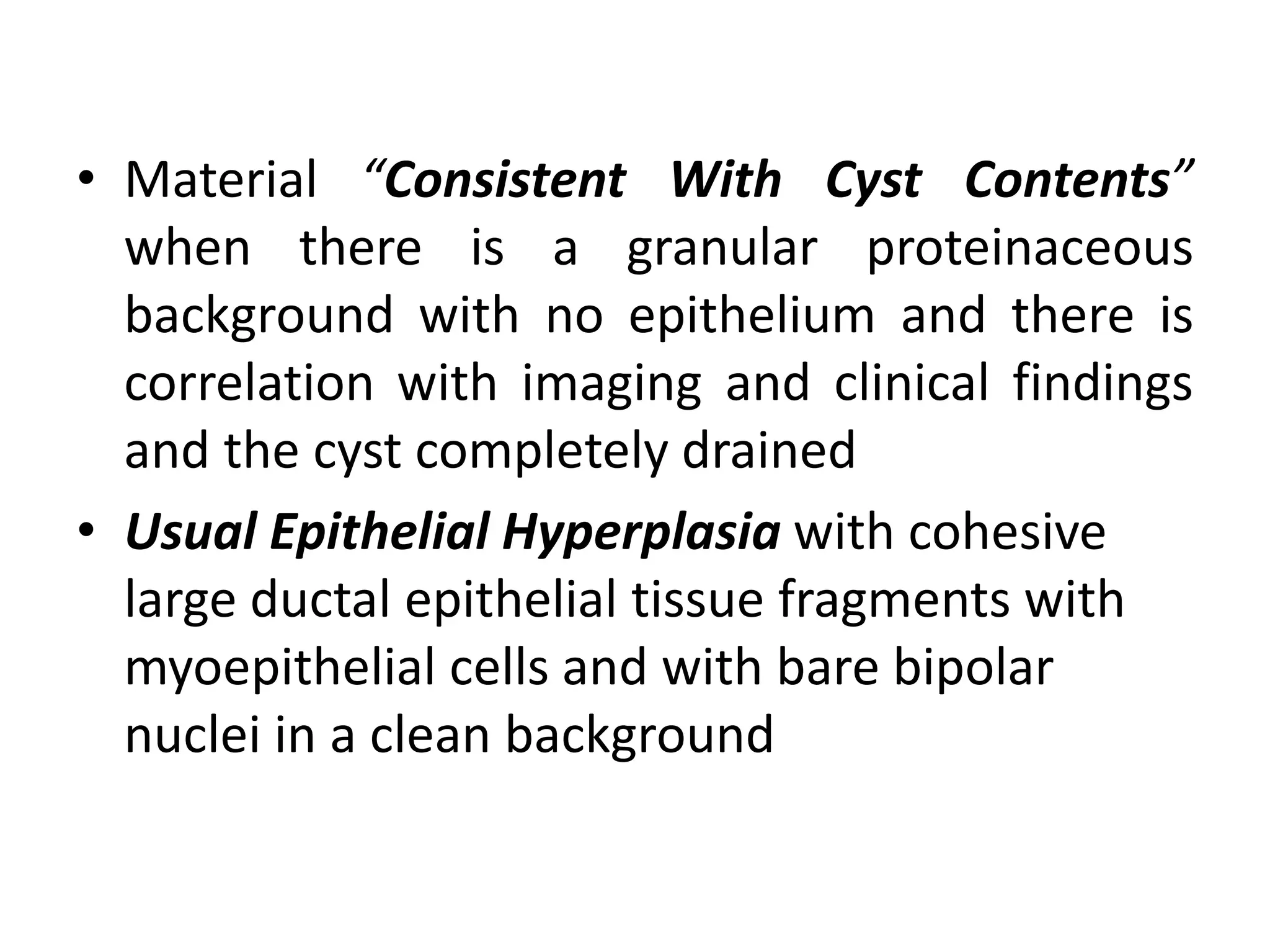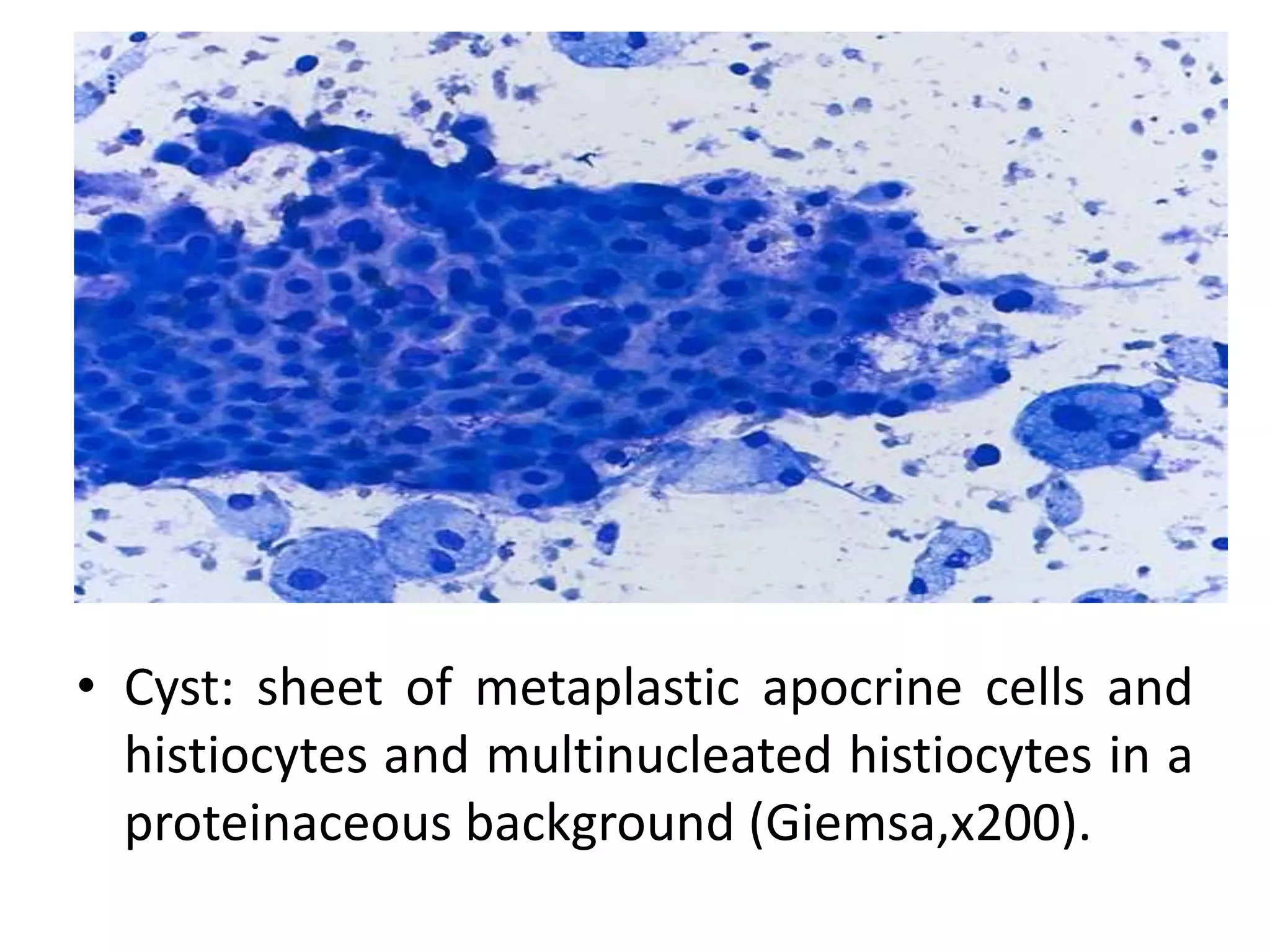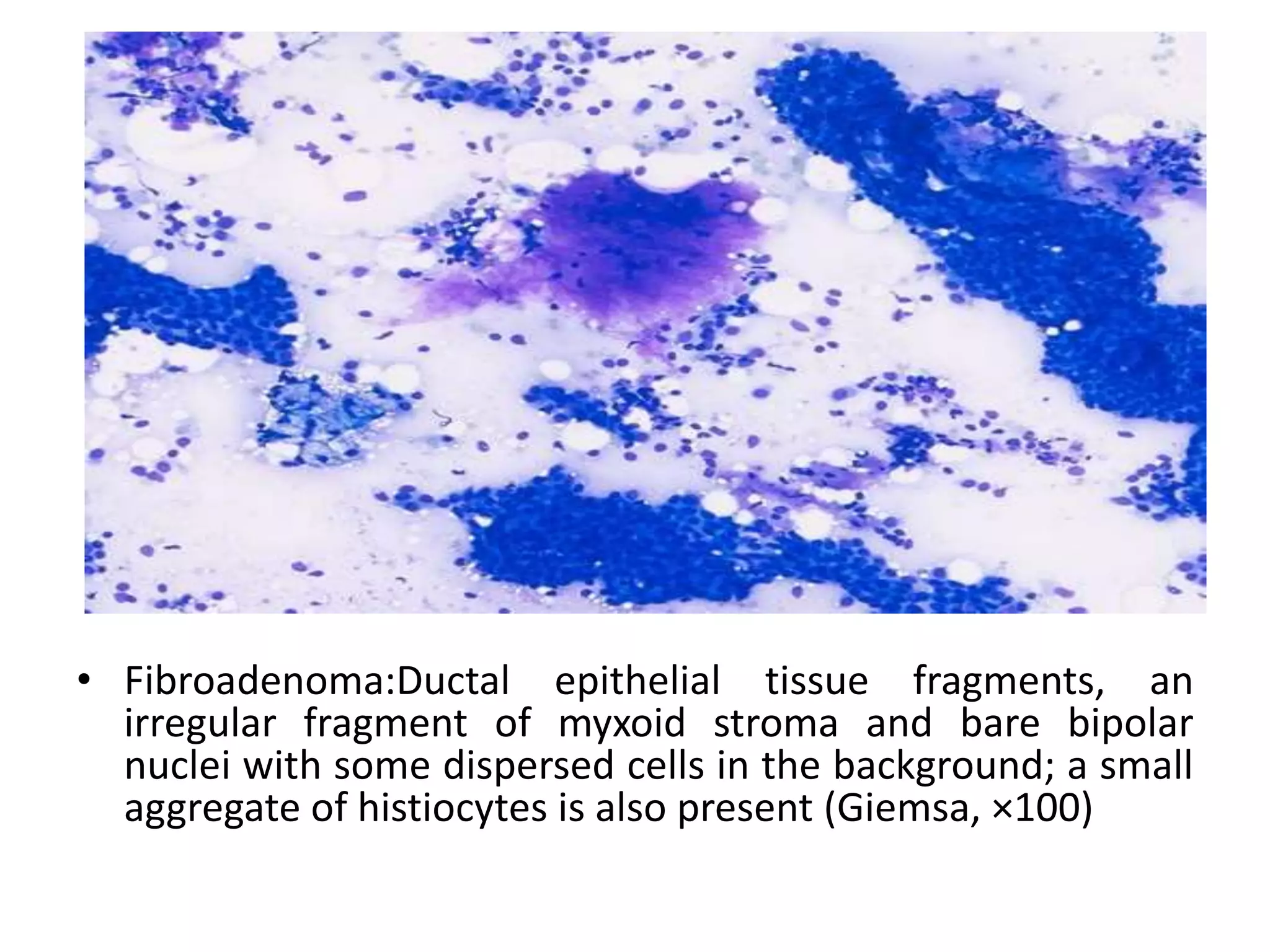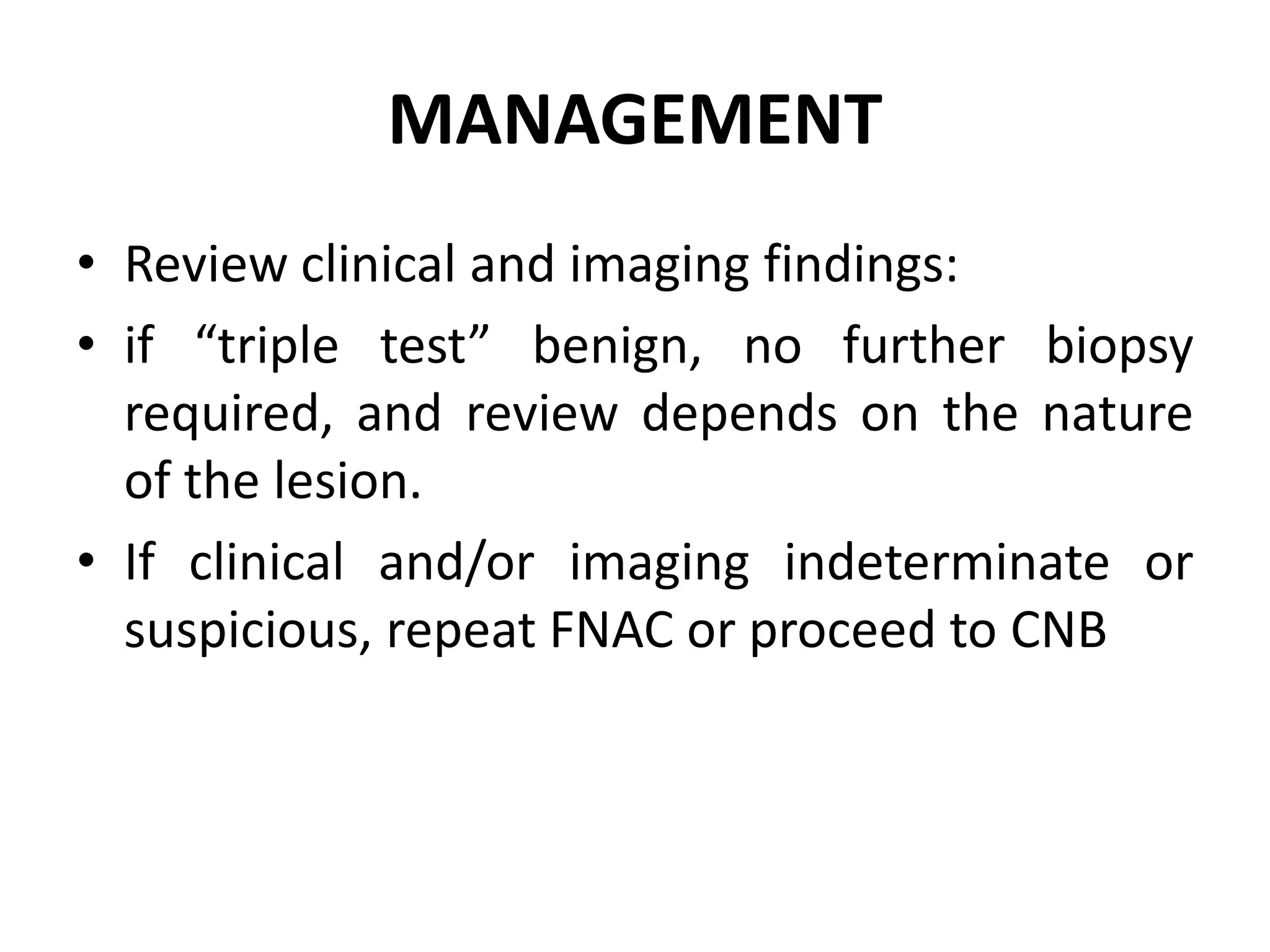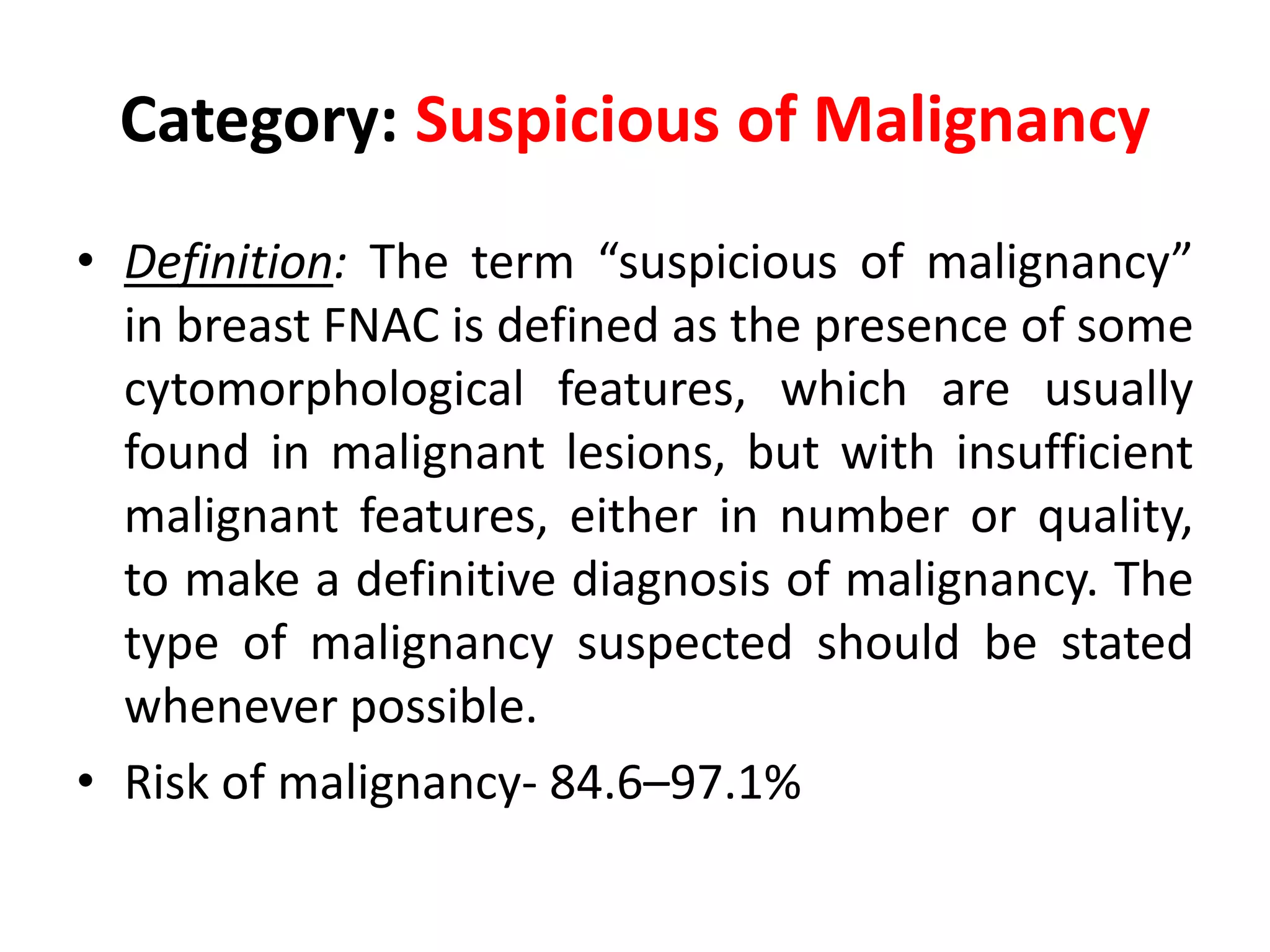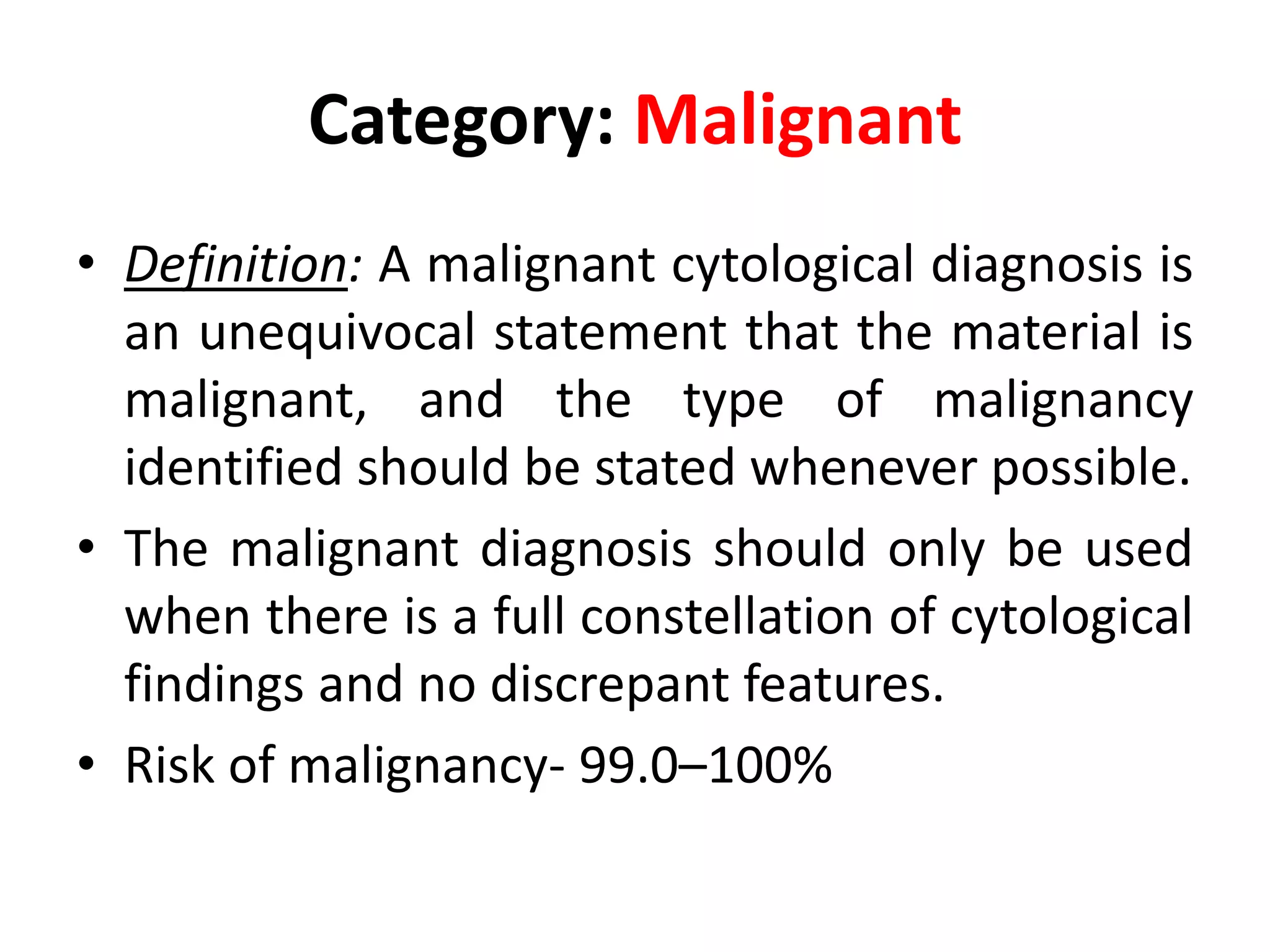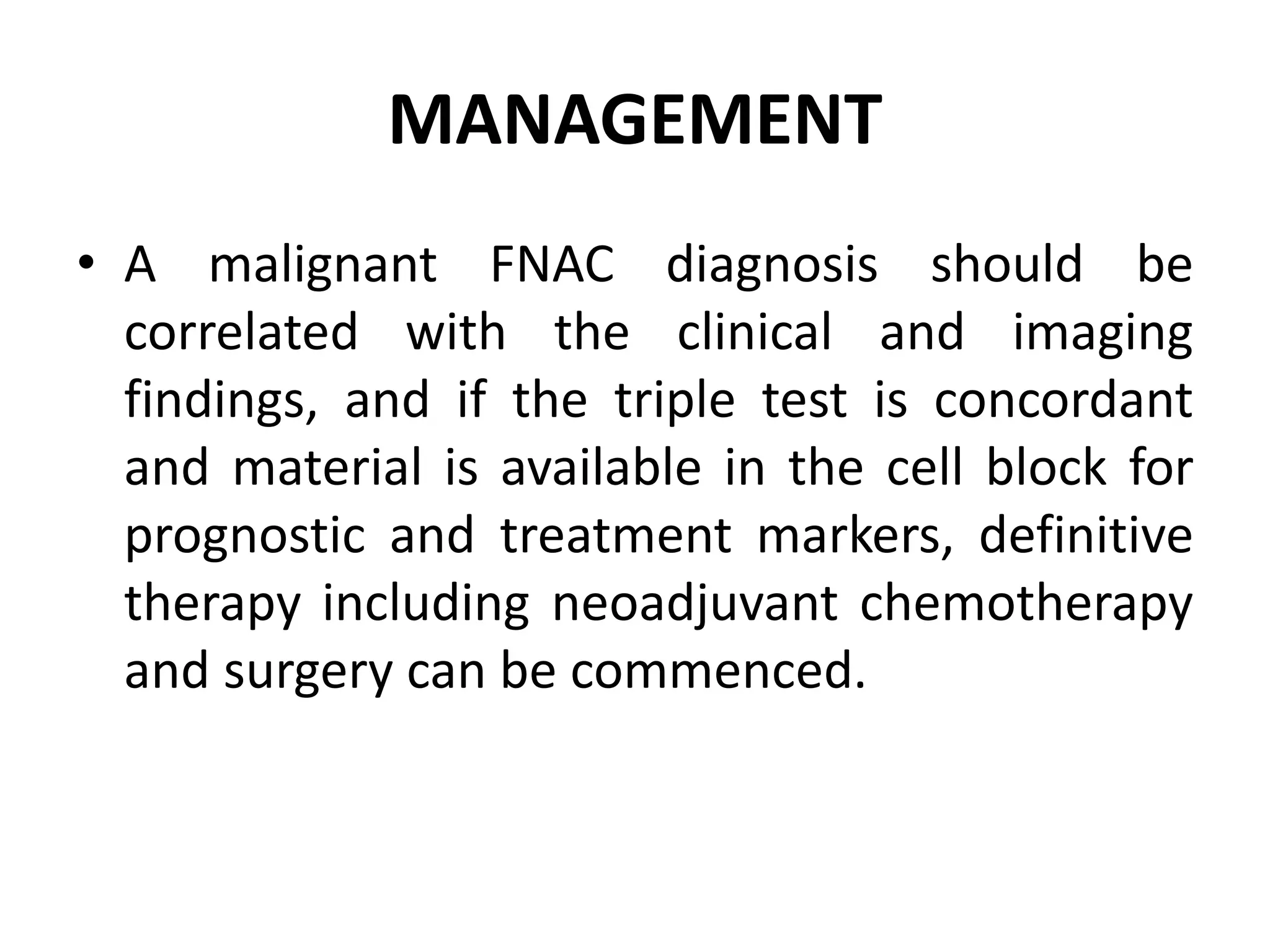The document summarizes the International Academy of Cytology (IAC) System for classifying breast malignancy based on fine-needle aspiration cytology (FNAC) results. The system was developed at a meeting in Yokohama in 2016. It aims to standardize breast cytology reporting to improve diagnosis and patient management. The system categorizes FNAC results as insufficient, benign, atypical, suspicious of malignancy, or malignant, with associated risks of malignancy. Cytological features and management recommendations are provided for each category. The goal is to link cytology reports to optimal breast care.
























